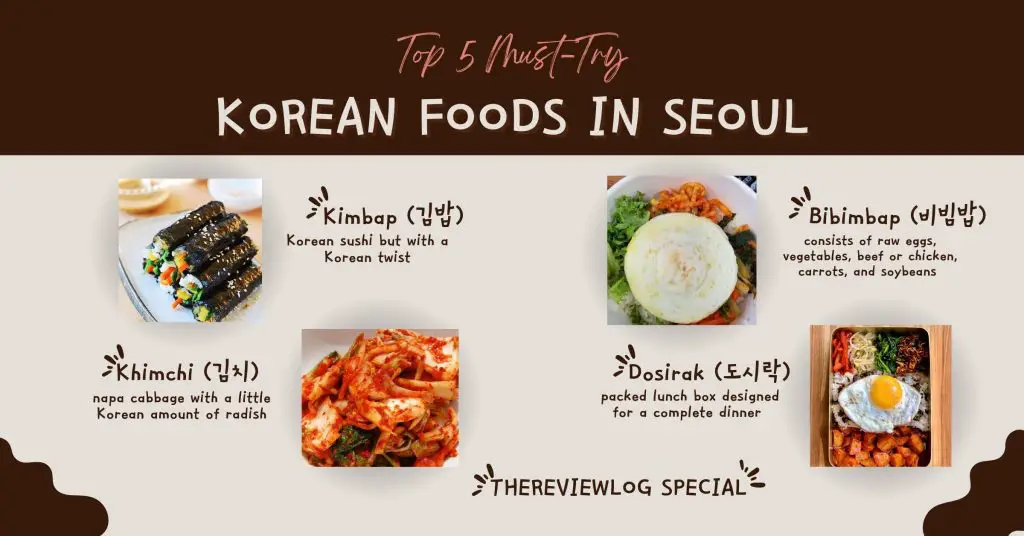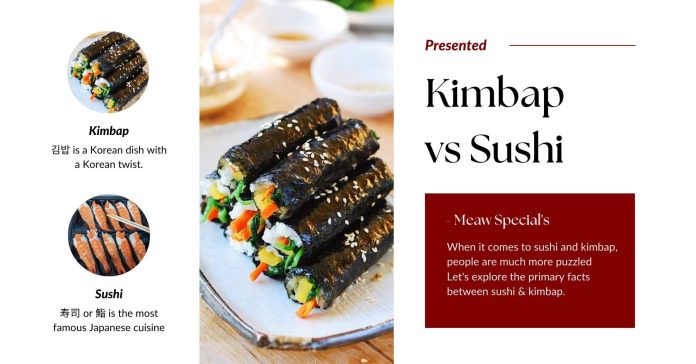Sushi (寿司 or 鮨) is the most famous Japanese cuisine, whereas Kimbap (김밥) is a Korean dish that is similar to sushi, but with a Korean twist. Kimbap translates to seaweed (“kim”) rice (“bap”), while the term Sushi literally means “sour-tasting”. People are lot more perplexed when it comes to sushi and kimbap. Let’s explore the primary distinction between sushi and kimbap.
7 facts between Japanese Sushi vs Korean Kimbap
1. Origin: Kimbap is a traditional Korean dish, while sushi is a Japanese dish that has become popular around the world. People often call kimbap as Korean sushi or Korean sushi roll, but we prefer it to be called by the Korean name, “kimbap (김밥)“.
2. Rice: Both kimbap and sushi are made with sushi rice, which is a short-grain rice that is sticky when cooked. However, the rice used in kimbap is seasoned with sesame oil and salt, while sushi rice is seasoned with rice vinegar, sugar, and salt. This gives the two dishes different flavor profiles. Many think kimbap and sushi might be the same, but there is a big difference in terms of the use of rice and the fillings.
3. Seaweed: Both kimbap and sushi are wrapped in seaweed, but the type of seaweed used is different. Kimbap is wrapped in dried laver (nori) which has a slightly chewy texture and a subtle flavor. Sushi is typically wrapped in a type of seaweed called “hoshi nori,” which is thinner and has a crisper texture.
Korean Kimbap (김밥)

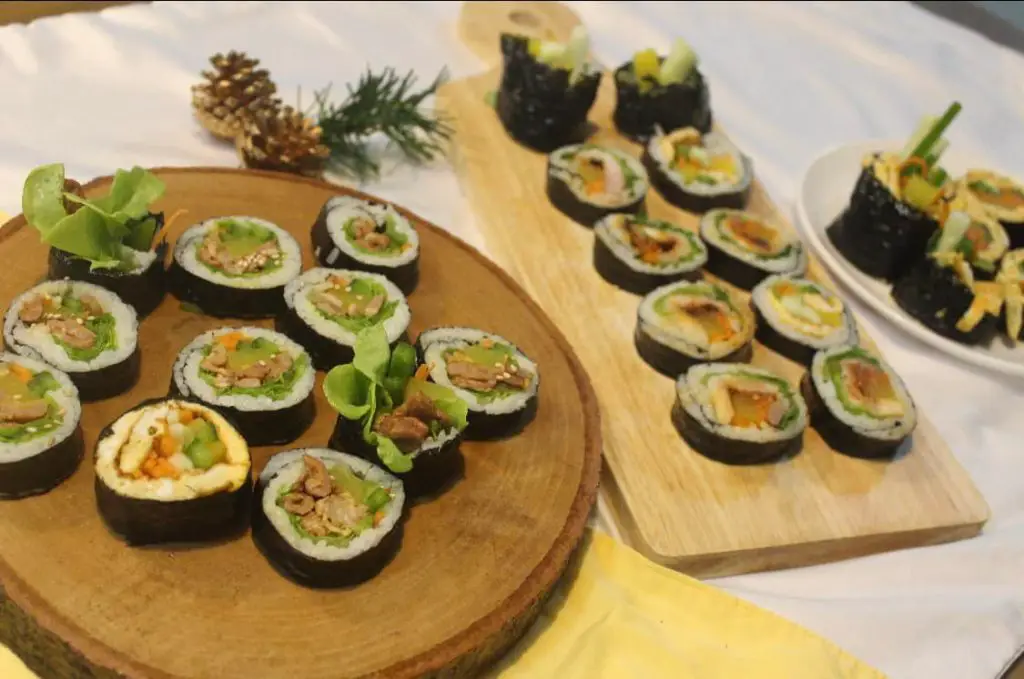
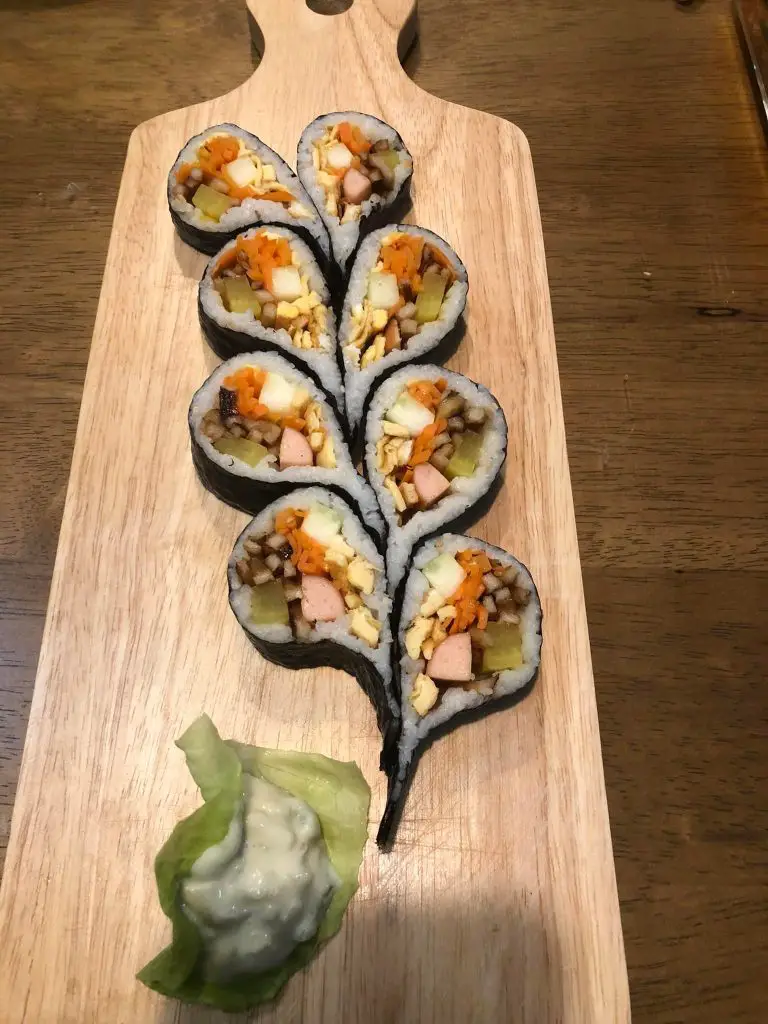
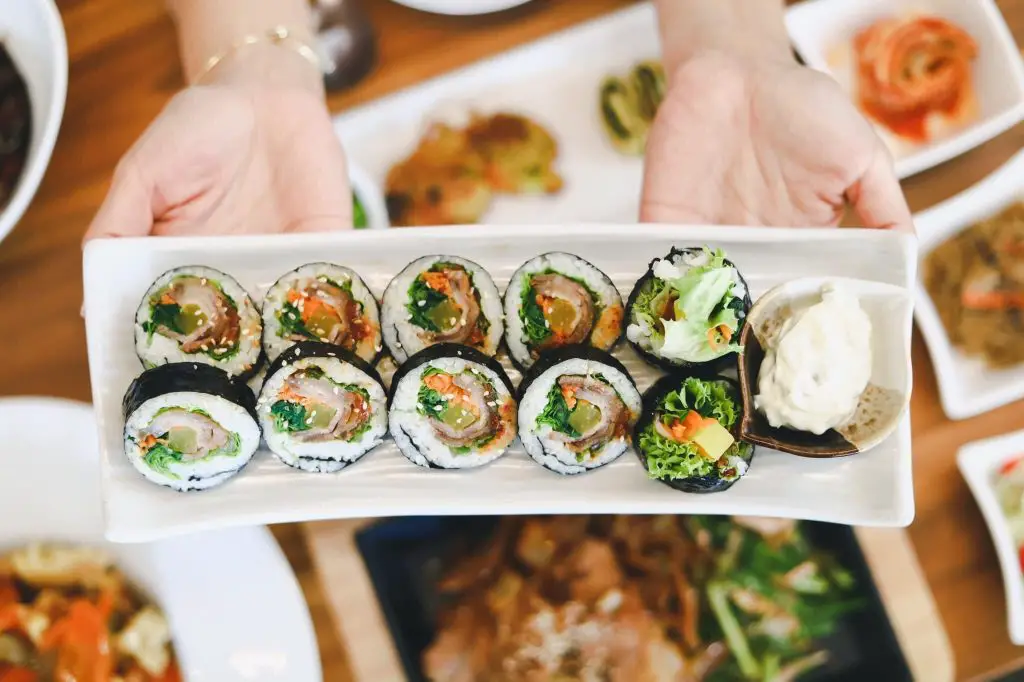
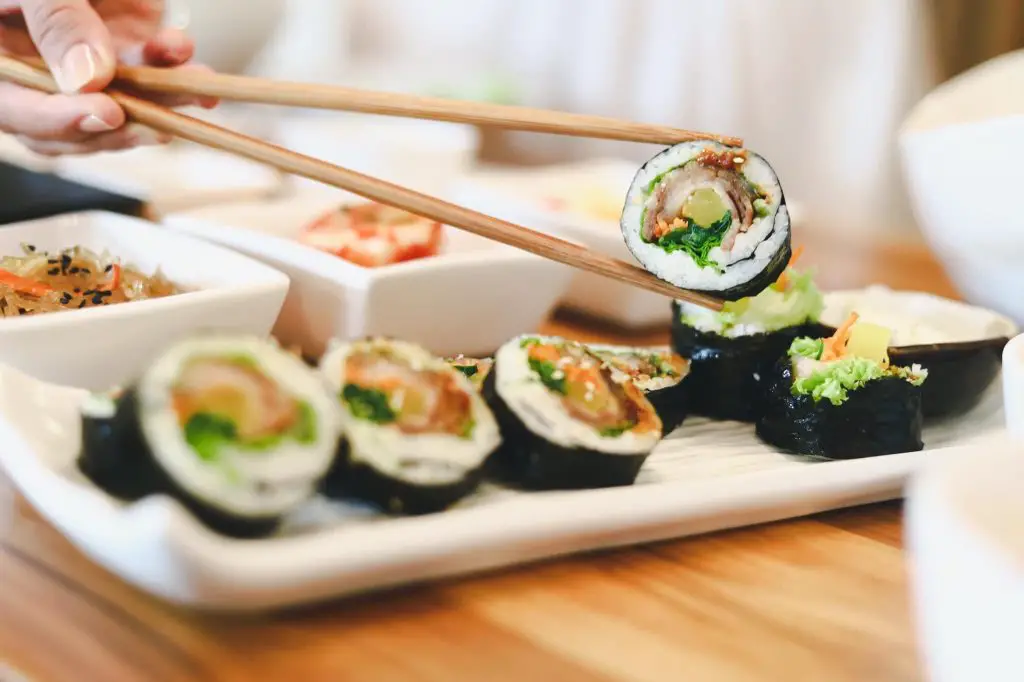
4. Fillings: Kimbap and sushi fillings differ in both type and preparation. Kimbap fillings typically include cooked vegetables, egg, and meat, such as beef or tuna, and are often seasoned with soy sauce and sugar. Even contains light lunch along with danmuji (yellow pickled radish) and kimchi. On the otherside, Sushi fillings can include raw fish, cooked seafood, vegetables, and egg, and are typically seasoned with wasabi, soy sauce, and pickled ginger. The seasoning gives sushi its distinct tangy flavor, while kimbap has a more neutral flavor that allows the fillings to stand out.

5. Shape: Kimbap is typically rolled into a cylindrical shape, while sushi can be made into a variety of shapes, including rolls, nigiri, and cones or triangles.
Japanese cuisine Sushi (寿司 or 鮨)

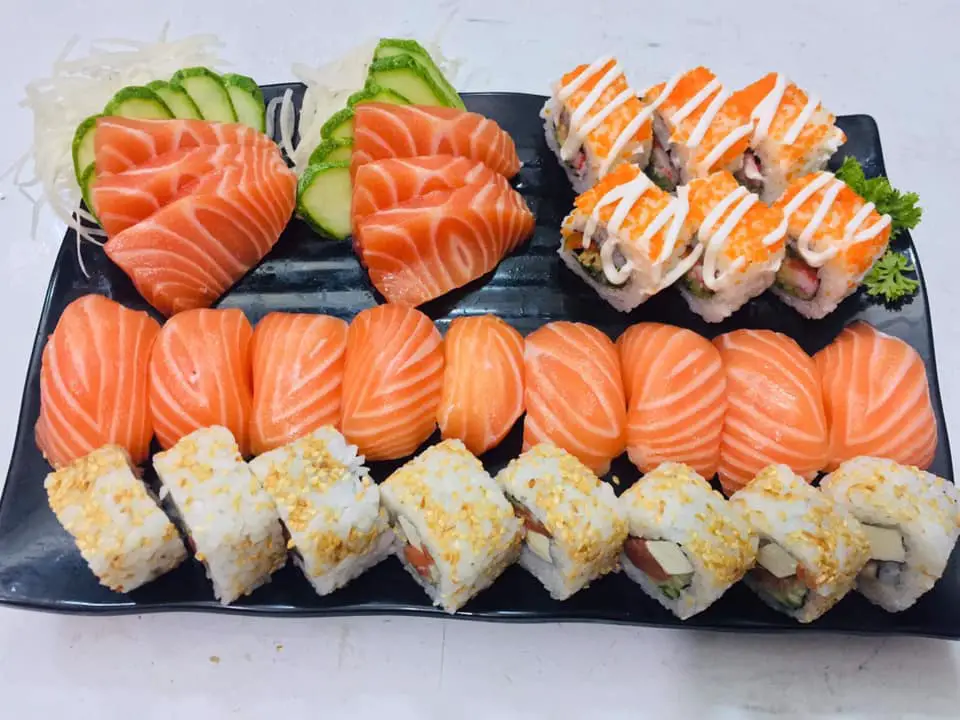
6. Size: Kimbap is usually larger in size than sushi rolls, and is often sliced into larger pieces. Sushi rolls, on the other hand, are typically smaller and sliced into bite-sized pieces.
7. Varieties: There are several different types of kimbap, including Samgak, Tuna, Classic, Kimchi, Chungmu, and Mayak. The five most well known sushi varieties are nigiri, sashimi, maki, uramaki, and temari.
From my personal opinion, I have tried both. Undoubtedly, the Shushi is a good option for those who enjoy the taste of raw fish with wasabi. Kimbap is an alternative option if you don't like such flavors. So, it is neutral to claim that each item has a distinct taste.
Finally – If you want to learn more about the best Korean traditional foods, check out this blog:
